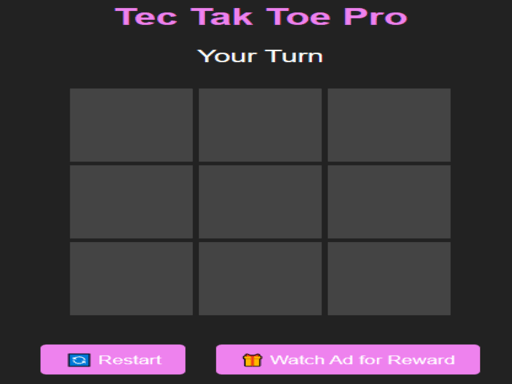Teeter Towe
About Teeter Towe
Dude, you *have* to check out this game I stumbled upon. Seriously, I know I’m always telling you about some new indie gem or hypercasual time-sink, but this one… this one’s different. It’s called Teeter Towe, and honestly, it’s completely consumed my brain for the last few days. I’m talking about that kind of absorption where you look up and realize three hours have evaporated, and all you’ve done is stare intently at a screen, trying not to mess up. It’s got that magic, you know?
When I first saw it, I was like, "Okay, another block-dropping game. Seen it, played it." But there's something so deceptively simple, yet utterly captivating, about Teeter Towe. The premise is bare-bones, almost minimalist to a fault, and that’s actually its genius. You’ve got this narrow, delicate platform, right? And your job is to drop brick blocks onto it, one by one, trying to build a tower. Sounds easy, right? Wrong. So, so wrong. The platform *teeters*. It’s a scale, a seesaw, a precarious balance beam, and every single block you drop shifts its weight, threatens its equilibrium. One wrong move, one millimeter off, and it all comes crashing down. And when I say crashing down, I mean it. It’s a glorious, heartbreaking, physics-defying cascade of bricks that makes you audibly groan.
What I love about games like this is how they strip away all the fluff and just focus on one core mechanic, perfecting it until it becomes this hypnotic, almost meditative challenge. Teeter Towe does exactly that. You’re not dealing with complex skill trees, or a sprawling narrative, or even different block types, really. It’s just you, the platform, and an endless supply of bricks. But within that simplicity lies an incredible depth. You see, every drop is a test of accuracy, balance, and honestly, a kind of foresight. You’re not just placing a block; you’re predicting how that block’s weight will distribute, how it will affect the existing structure, and crucially, how it will change the tilt of the platform itself.
The feeling when you’re playing is something else. You start with a single block, dropping it carefully right in the center. Easy. Then the second, maybe you try to stack it perfectly on top. But then you get a slightly wider block, or a narrower one, and suddenly, the whole dynamic changes. You can almost feel the weight of the virtual brick in your own hand as you drag it into position, hovering it over the platform. Your breath hitches. Your eyes narrow, focusing on the slightest tremor in the platform below. You’re looking for that sweet spot, that perfect pixel where the block will land without causing a catastrophic wobble. There’s this incredible tension that builds up, especially as your tower gets taller, more ambitious. You’ll find yourself leaning into the screen, almost willing the block to land just right.
And the physics! Oh man, the physics are brilliant. They’re not just some background calculation; they’re the main character. You can see the platform groan under the weight, slowly, subtly tilting. Sometimes, you’ll drop a block, and for a split second, it looks like it’s going to be fine. Then, almost in slow motion, the whole thing starts to lean, the bricks at the bottom shifting, a tiny gap appearing, and you know, you just *know*, it’s over. The way the blocks tumble, scattering across the screen, it’s a beautiful, tragic ballet of failure. But that failure isn't discouraging; it's invigorating. It just makes you want to hit that "retry" button faster than ever. "Okay, *this* time," you think, "this time I’ll get it."
In my experience, the best moments come when you’re deep into a run, your tower is impossibly tall, swaying gently with every new addition. You’ve managed to balance a stack of thin blocks on one side, counterbalanced by a single wide block on the other, creating this precarious, architectural marvel. The platform is almost horizontal, defying gravity, and you’re just in the zone. Every decision feels critical. Do you try to go higher, risking everything? Or do you try to stabilize, perhaps by dropping a smaller block into a gap you’ve created, evening out the weight? It’s like a puzzle game where the pieces are constantly in motion, and the solution is always just out of reach, but tantalizingly close.
There’s something magical about how such a simple concept can elicit such a strong emotional response. You feel the frustration when a seemingly perfect drop sends everything tumbling. You feel the intense satisfaction when you manage to recover from a near-collapse, placing a counterweight block at the last second, watching the platform slowly, *miraculously*, right itself. That moment, that tiny victory against the relentless pull of gravity, is pure dopamine. It’s the kind of feeling that makes you pump your fist in the air, even if no one else is watching.
What's fascinating is how Teeter Towe forces you to slow down. In a world of fast-paced, high-octane games, this one demands patience. You can’t rush it. Each drop requires careful consideration. You’re not just tapping a button; you’re performing a delicate surgical procedure. You learn to appreciate the subtle visual cues – the slight lean of the platform, the way a block settles, the shadow it casts. You start to develop an intuition for weight and balance, a sixth sense for structural integrity. It’s almost like you’re becoming a virtual architect, learning the unspoken rules of this tiny, unstable world.
I mean, I’ve always been drawn to games that test precision and offer a clear, immediate feedback loop, and Teeter Towe nails it. It’s got that Jenga-like tension, where every move feels like it could be your last, but it’s amplified by the dynamic, constantly shifting base. You’re not just removing blocks; you’re adding them, creating new points of instability with every action. The brilliant thing about this is that it never feels unfair. When it collapses, you know exactly why. You can replay the moment in your head, identifying the exact block, the exact placement, that sealed your tower’s fate. And that clarity is what keeps you coming back, because you genuinely believe you can do better next time. You *know* you can.
The minimalist aesthetic really helps too. There are no distractions. The background is clean, the blocks are simple, and all your focus is directed at that one crucial point of interaction. It makes the game feel incredibly focused, almost pure. You can almost hear the soft *thunk* as a block lands, the subtle *creak* of the platform as it adjusts, the gentle *whoosh* as the next block appears, waiting for your command. It’s a sensory experience that’s understated but incredibly effective, pulling you deeper into its world.
The real magic happens when you hit that flow state. You’re not thinking about individual blocks anymore; you’re thinking about the overall structure, the ebb and flow of weight, the rhythm of the drops. Your hands move almost instinctively, guided by an inner sense of balance. You’re not just playing a game; you’re engaged in a delicate dance with physics, pushing the boundaries of what’s possible. And then, when you finally achieve a new high score, when your tower stands impossibly tall, a testament to your focus and skill, there’s this profound sense of accomplishment. It’s a quiet victory, but it’s deeply satisfying. It makes me wonder how high you can actually go, what impossible structures are waiting to be built.
Honestly, it’s one of those games that proves you don’t need flashy graphics or complex narratives to create an incredibly engaging and addictive experience. All you need is a brilliant core idea, perfectly executed physics, and a challenge that speaks to that primal human desire for mastery. Teeter Towe has it all. It's a testament to clever game design, and it’s genuinely one of the most compelling hypercasual games I’ve played in ages. You absolutely have to give it a shot. I promise, you'll be hooked.
When I first saw it, I was like, "Okay, another block-dropping game. Seen it, played it." But there's something so deceptively simple, yet utterly captivating, about Teeter Towe. The premise is bare-bones, almost minimalist to a fault, and that’s actually its genius. You’ve got this narrow, delicate platform, right? And your job is to drop brick blocks onto it, one by one, trying to build a tower. Sounds easy, right? Wrong. So, so wrong. The platform *teeters*. It’s a scale, a seesaw, a precarious balance beam, and every single block you drop shifts its weight, threatens its equilibrium. One wrong move, one millimeter off, and it all comes crashing down. And when I say crashing down, I mean it. It’s a glorious, heartbreaking, physics-defying cascade of bricks that makes you audibly groan.
What I love about games like this is how they strip away all the fluff and just focus on one core mechanic, perfecting it until it becomes this hypnotic, almost meditative challenge. Teeter Towe does exactly that. You’re not dealing with complex skill trees, or a sprawling narrative, or even different block types, really. It’s just you, the platform, and an endless supply of bricks. But within that simplicity lies an incredible depth. You see, every drop is a test of accuracy, balance, and honestly, a kind of foresight. You’re not just placing a block; you’re predicting how that block’s weight will distribute, how it will affect the existing structure, and crucially, how it will change the tilt of the platform itself.
The feeling when you’re playing is something else. You start with a single block, dropping it carefully right in the center. Easy. Then the second, maybe you try to stack it perfectly on top. But then you get a slightly wider block, or a narrower one, and suddenly, the whole dynamic changes. You can almost feel the weight of the virtual brick in your own hand as you drag it into position, hovering it over the platform. Your breath hitches. Your eyes narrow, focusing on the slightest tremor in the platform below. You’re looking for that sweet spot, that perfect pixel where the block will land without causing a catastrophic wobble. There’s this incredible tension that builds up, especially as your tower gets taller, more ambitious. You’ll find yourself leaning into the screen, almost willing the block to land just right.
And the physics! Oh man, the physics are brilliant. They’re not just some background calculation; they’re the main character. You can see the platform groan under the weight, slowly, subtly tilting. Sometimes, you’ll drop a block, and for a split second, it looks like it’s going to be fine. Then, almost in slow motion, the whole thing starts to lean, the bricks at the bottom shifting, a tiny gap appearing, and you know, you just *know*, it’s over. The way the blocks tumble, scattering across the screen, it’s a beautiful, tragic ballet of failure. But that failure isn't discouraging; it's invigorating. It just makes you want to hit that "retry" button faster than ever. "Okay, *this* time," you think, "this time I’ll get it."
In my experience, the best moments come when you’re deep into a run, your tower is impossibly tall, swaying gently with every new addition. You’ve managed to balance a stack of thin blocks on one side, counterbalanced by a single wide block on the other, creating this precarious, architectural marvel. The platform is almost horizontal, defying gravity, and you’re just in the zone. Every decision feels critical. Do you try to go higher, risking everything? Or do you try to stabilize, perhaps by dropping a smaller block into a gap you’ve created, evening out the weight? It’s like a puzzle game where the pieces are constantly in motion, and the solution is always just out of reach, but tantalizingly close.
There’s something magical about how such a simple concept can elicit such a strong emotional response. You feel the frustration when a seemingly perfect drop sends everything tumbling. You feel the intense satisfaction when you manage to recover from a near-collapse, placing a counterweight block at the last second, watching the platform slowly, *miraculously*, right itself. That moment, that tiny victory against the relentless pull of gravity, is pure dopamine. It’s the kind of feeling that makes you pump your fist in the air, even if no one else is watching.
What's fascinating is how Teeter Towe forces you to slow down. In a world of fast-paced, high-octane games, this one demands patience. You can’t rush it. Each drop requires careful consideration. You’re not just tapping a button; you’re performing a delicate surgical procedure. You learn to appreciate the subtle visual cues – the slight lean of the platform, the way a block settles, the shadow it casts. You start to develop an intuition for weight and balance, a sixth sense for structural integrity. It’s almost like you’re becoming a virtual architect, learning the unspoken rules of this tiny, unstable world.
I mean, I’ve always been drawn to games that test precision and offer a clear, immediate feedback loop, and Teeter Towe nails it. It’s got that Jenga-like tension, where every move feels like it could be your last, but it’s amplified by the dynamic, constantly shifting base. You’re not just removing blocks; you’re adding them, creating new points of instability with every action. The brilliant thing about this is that it never feels unfair. When it collapses, you know exactly why. You can replay the moment in your head, identifying the exact block, the exact placement, that sealed your tower’s fate. And that clarity is what keeps you coming back, because you genuinely believe you can do better next time. You *know* you can.
The minimalist aesthetic really helps too. There are no distractions. The background is clean, the blocks are simple, and all your focus is directed at that one crucial point of interaction. It makes the game feel incredibly focused, almost pure. You can almost hear the soft *thunk* as a block lands, the subtle *creak* of the platform as it adjusts, the gentle *whoosh* as the next block appears, waiting for your command. It’s a sensory experience that’s understated but incredibly effective, pulling you deeper into its world.
The real magic happens when you hit that flow state. You’re not thinking about individual blocks anymore; you’re thinking about the overall structure, the ebb and flow of weight, the rhythm of the drops. Your hands move almost instinctively, guided by an inner sense of balance. You’re not just playing a game; you’re engaged in a delicate dance with physics, pushing the boundaries of what’s possible. And then, when you finally achieve a new high score, when your tower stands impossibly tall, a testament to your focus and skill, there’s this profound sense of accomplishment. It’s a quiet victory, but it’s deeply satisfying. It makes me wonder how high you can actually go, what impossible structures are waiting to be built.
Honestly, it’s one of those games that proves you don’t need flashy graphics or complex narratives to create an incredibly engaging and addictive experience. All you need is a brilliant core idea, perfectly executed physics, and a challenge that speaks to that primal human desire for mastery. Teeter Towe has it all. It's a testament to clever game design, and it’s genuinely one of the most compelling hypercasual games I’ve played in ages. You absolutely have to give it a shot. I promise, you'll be hooked.
Enjoy playing Teeter Towe online for free on Viralexclusivo Games. This Arcade game offers amazing gameplay and stunning graphics. No downloads required, play directly in your browser!
How to Play
Fragile Balance mdash test your skills and precision by dropping brick blocks onto a platform Don rsquo t let the tower fall Press the left mouse button or any part of your smartphone to drop the block onto the platform





Comments
This game is awesome! I love the graphics and gameplay.
One of the best games I've played recently. Highly recommended!